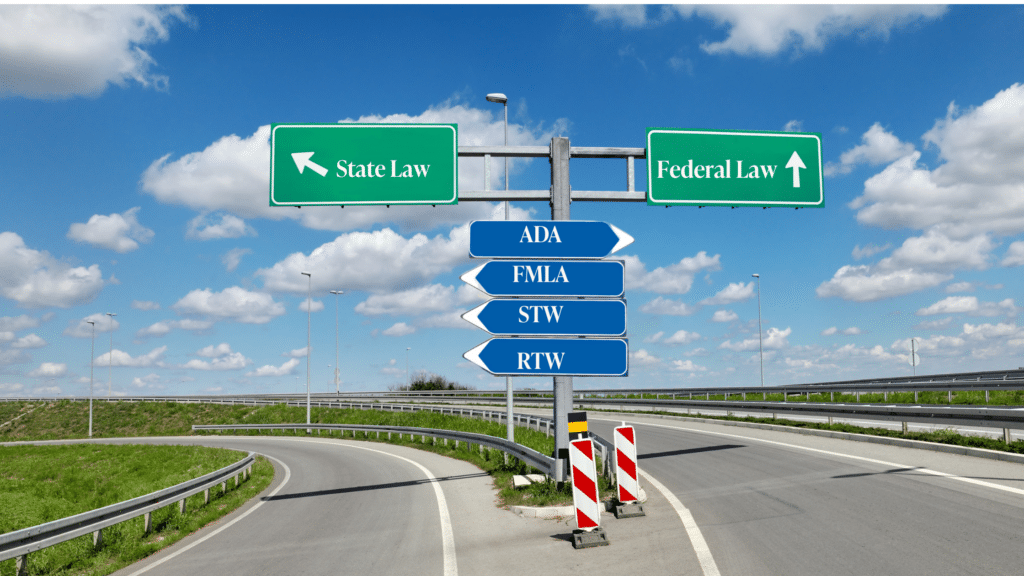Multiple employers or insurers can be liable for a cumulative trauma (CT) injury, and it’s common for employers or insurers to dispute whether and how much liability they have for such an injury.Pursuant to Labor Code 5500.5(a), liability for a CT injury is limited to employers who employed the worker during the one-year period immediately preceding the date of injury (LC 5412), or the last date of injurious exposure, whichever occurs first.
So there’s no single point from which the liability period is determined. It could be based on either the date of injury under LC 5412 or the last date of injurious exposure. Furthermore, the date of injury under LC 5412 requires the concurrence of: (1) compensable disability; and (2) knowledge of industrial causation. The liability period for a CT injury is a frequent source of contention.
Two recent decisions from the WCAB show how complex and difficult the issue can be. First, in Mondragon v. Providence Industries, LLC, 2022 Cal. Wrk. Comp. P.D. LEXIS 137, an injured worker filed a claim for a cumulative trauma injury through April 18, 2017. Insurance Company of the West (ICW) had coverage through April 13, 2017, and Hartford Insurance Co. (Hartford) had coverage starting the next day. ICW picked up administration of the claim. The applicant treated for the injury, but missed no time from work and continued working until he was declared permanent and stationary (P&S) on May 15, 2018. ICW amended the application, alleging a new injurious period through May 15, 2018, and joined Hartford. ICW also settled the claim with the applicant, without Hartford’s participation, and sought 100 percent reimbursement from Hartford.
The WCAB upheld an arbitrator’s decision that Hartford was 100 percent liable for the claim. It explained that the date of injury under LC 5500.5 requires compensable temporary disability (TD) or permanent disability (PD), and that medical treatment alone is not disability. It added that although medical treatment could be evidence of compensable PD, it’s a factual determination requiring expert medical opinion. The board found no medical evidence establishing that the applicant had compensable disability until May 15, 2018, when he was deemed permanently impaired by his treating doctor. The WCAB concluded that the period of injurious exposure continued through May 15, 2018, and that Hartford was 100 percent liable for the injury.
So, in Mondragon, although the applicant’s injury was sufficiently serious as to require ICW to provide medical treatment, because the applicant never missed work, there was no compensable TD under LC 5412. The WCAB concluded that the liability period in LC 5500.5 was not triggered until the applicant was declared P&S more than a year after beginning treatment, because the P&S report was the first evidence of compensable disability.
In both cases, the WCAB held that the extensions of time defined in CCR 10605 are not individualized for each party. Instead, it concluded that CCR 10605 creates a single time period to act for all parties, and if even one party is served at an address outside of California but within the United States, all parties have an extra 10 days to file a petition for reconsideration.
In contrast, in the second case, Saavedra v. Country Fresh Herbs, 2022 Cal. Wrk. Comp. P.D. LEXIS 145, an applicant filed an application for a CT injury through April 12, 2017. He continued working, and the parties stipulated that he was employed through Dec. 20, 2020. Republic Underwriters (Republic) had coverage through Dec. 31, 2016; Falls Lake Insurance Co. (Falls Lake) had coverage from Jan. 1, 2017 through Dec. 31, 2017; and Preferred Professional Insurance Co. (Preferred) had coverage from Jan. 1, 2018 through Dec. 20, 2020.
A QME evaluated the applicant on Sept. 12, 2017, and found that he sustained a cumulative trauma injury, but was not P&S. Later, the parties sent a joint letter to the QME requesting “a provisional rating in this matter to assist the parties in early settlement efforts.” On Nov. 13, 2017, the QME outlined impairment under the AMA guides, and reported that the subjective and objective factors of disability based on his report of Sept. 12, 2017 were used to calculate the impairment. The applicant wasn’t declared P&S until 2018.
The WCAB held that the applicant had compensable disability for the purposes of the date of injury pursuant to LC 5412, and liability pursuant to LC 5500.5, based on the QME’s report of Sept. 12, 2017. It found that the report established that the applicant had a bone-on-bone arthritic condition that was ratable under the AMA guides, and the QME later used the physical examination from the evaluation to report factors of disability. Because the applicant also knew his disability was caused by his employment at that time, the WCAB concluded that the date of injury under LC 5412 was Sept. 12, 2017.
In both cases, the applicants missed no work as a result of their CT injuries, and continued treating for more than a year after initially filing their claims. In Saavedra, however, the QME specifically was requested to address whether the CT injury would result in permanent disability, even though the applicant was not yet P&S.
So, the liability period for a CT injury is not controlled by an applicant’s pleading regarding the CT period. If an applicant is not taken off work as a result of a CT injury, proactive handling of a file is necessary in cases in which multiple defendants might be liable for a claim. Defendants must be strategic regarding the liability period under LC 5500.5. If a defendant wants to establish compensable PD prior to the P&S date, it might be necessary to request that a doctor explain whether the injury will result in compensable PD.
About the Author
Sure Log, of Counsel, is a specialist in workers’ compensation defense and related labor law issues. He analyzes files for litigation and settlement, conducts research, reviews records to facilitate completion of discovery and drafts a variety of documents, including trial and appellate briefs. He was instrumental in a 2009 case that ended vocational rehabilitation in California.
About IEA
IEA traces its history to our predecessor organization, “The Fire Underwriters Association of the Pacific” (FUAP) created in 1876 in San Francisco, CA after the post Gold Rush building boom. Its stated purpose was the promotion of harmony and good practice among the claims adjusting profession. Over time, we became an all industry, all-lines organization with national outreach across the United States.
Today, we are committed to providing professional development to a changing workforce with changing needs. IEA offers myriad courses, seminars, and on-demand training to meet our students where they are and help them reach their goals. We are proud of our contribution to better risk analysis and high operating standards in the industry.









